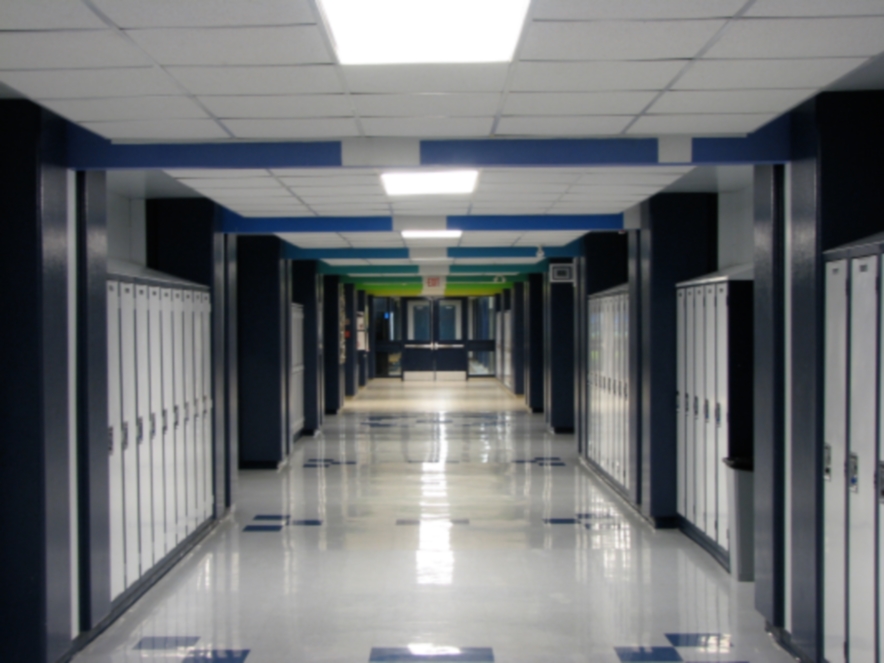Schools Consider Adopting Body Cameras for Security
Thirty-six states are currently considering legislation regarding the use of body cameras, according to reports by the Security Industry Association, and some law enforcement officers are already donning the technology to document their patrols. But now some schools are contemplating a similar move for administrators and school resource officers (SROs).
Earlier this month the Des Moines Register reported that an Iowa school is outfitting administratorsthroughout its eight school buildings with small, clip-on body cameras, and using them to film interactions between students and school authorities. Burlington Community School District Superintendent Pat Coen told the Register the move was about "personal accountability," and learning lessons from recorded events.
But school security experts are questioning the advisability of such a move.
Kenneth Trump, president of consulting company National School Safety and Securit?y, tells Security Management that�the context of the environment for body cameras needs to be considered. "Your school administrators aren't on the battlefields of Afghanistan or in the back alleys of a local community," he says. "They're in a school with children in an educational, supportive context on a day-to-day basis."
Students serve as critical pieces to the security puzzle in schools, he says, often bringing information about potential threats directly to teachers and administrators. "To put up another obstacle, a camera in between them, only makes it more challenging to build those relationships," notes Trump.
Paul Timm, PSP, president of RETA Security, notes that�several SROs are sworn law enforcement and can even carry weapons, so having a camera isn't necessarily a bad idea. "Some school districts have gone already with designating people to be able to carry weapons. I would almost insist that the person who's carrying have some kind of a cam. I think it just makes sense to me."
He notes one such district in Texas, the Houston Independent School District, has begun arming certain staff members with weapons to act as "hall marshals," akin to air marshals on a plane. "They said 'we've trained staff, they are carrying, but we are not even telling our other staff members who they are.'
There would be challenges that come along with the wearable technology, as security personnel will often patrol restrooms or locker rooms where privacy is a major concern. "If we give officers cart blanche to be able to turn it on and off, they might also see a situation and say 'I'm going to turn it off because that kid is a trouble maker I'm going to show him who's boss.' I think there's a certain degree of intimidation," notes Timm.
However, cameras could help reduce�the proliferation of�unreported incidents.�"What is far more pervasive and unsettling to me is the number of security personnel who never write up an incident, or they wrote up an incident and it gets buried by administrators because nobody wants to be a school that looks like it's having incidents," Timm�says.
Ultimately, schools must decide what problem the body cameras are designed to address.�Having body cameras isn't necessarily a preventative measure, says Amy Klinger, director of programs at Educator School Safety Network, a nonprofit school training organization. She says it's a way to prove an event happened, but it doesn't fix the problem. "If you're on that thin of ice that you need video documentation of it, then maybe you've not been doing all of your job in terms of investigation," Klinger points out. "These kids are not great criminal minds that you can't somehow put this information together another way."
Instead, Klinger urges schools to�focus�on a holistic approach to safety. For example, using�security assessments curbs could curb the�need for a camera in the first place. "There are a lot of more comprehensive initiatives we can do," she says. "Threat assessment management, strategic supervision, visitor engagement� all those sorts of things are pretty low cost."
Klinger adds that the value of training all faculty and staff members at a school on security and safety measures outweighs the benefit of arming one person with a body camera.?�"If I train all 50 of them to be able to prevent violence, isn't that a much better bang for my buck than one SRO who cannot be everywhere and cannot do everything?"
But with a carefully documented approach, Timm believes the use of body cameras in schools could be beneficial. "The value rests precariously on a foundation of written practices and training," he notes. "It's something that should be brought before a collaborative group and we should be documenting what our practices are before we even start walking it down the hallway."�
